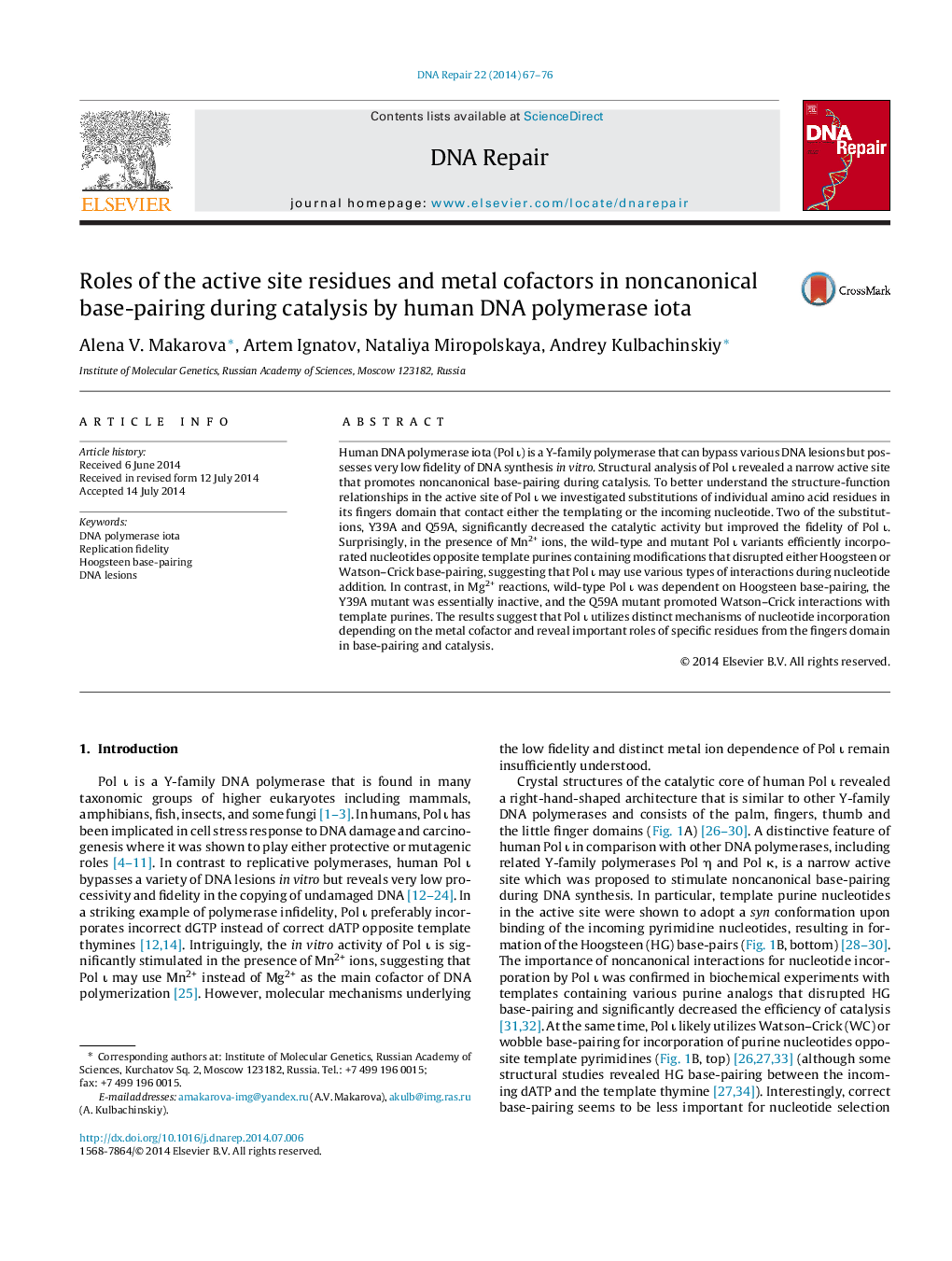| کد مقاله | کد نشریه | سال انتشار | مقاله انگلیسی | نسخه تمام متن |
|---|---|---|---|---|
| 8320786 | 1539406 | 2014 | 10 صفحه PDF | دانلود رایگان |
عنوان انگلیسی مقاله ISI
Roles of the active site residues and metal cofactors in noncanonical base-pairing during catalysis by human DNA polymerase iota
دانلود مقاله + سفارش ترجمه
دانلود مقاله ISI انگلیسی
رایگان برای ایرانیان
موضوعات مرتبط
علوم زیستی و بیوفناوری
بیوشیمی، ژنتیک و زیست شناسی مولکولی
زیست شیمی
پیش نمایش صفحه اول مقاله

چکیده انگلیسی
Human DNA polymerase iota (Pol ι) is a Y-family polymerase that can bypass various DNA lesions but possesses very low fidelity of DNA synthesis in vitro. Structural analysis of Pol ι revealed a narrow active site that promotes noncanonical base-pairing during catalysis. To better understand the structure-function relationships in the active site of Pol ι we investigated substitutions of individual amino acid residues in its fingers domain that contact either the templating or the incoming nucleotide. Two of the substitutions, Y39A and Q59A, significantly decreased the catalytic activity but improved the fidelity of Pol ι. Surprisingly, in the presence of Mn2+ ions, the wild-type and mutant Pol ι variants efficiently incorporated nucleotides opposite template purines containing modifications that disrupted either Hoogsteen or Watson-Crick base-pairing, suggesting that Pol ι may use various types of interactions during nucleotide addition. In contrast, in Mg2+ reactions, wild-type Pol ι was dependent on Hoogsteen base-pairing, the Y39A mutant was essentially inactive, and the Q59A mutant promoted Watson-Crick interactions with template purines. The results suggest that Pol ι utilizes distinct mechanisms of nucleotide incorporation depending on the metal cofactor and reveal important roles of specific residues from the fingers domain in base-pairing and catalysis.
ناشر
Database: Elsevier - ScienceDirect (ساینس دایرکت)
Journal: DNA Repair - Volume 22, October 2014, Pages 67-76
Journal: DNA Repair - Volume 22, October 2014, Pages 67-76
نویسندگان
Alena V. Makarova, Artem Ignatov, Nataliya Miropolskaya, Andrey Kulbachinskiy,